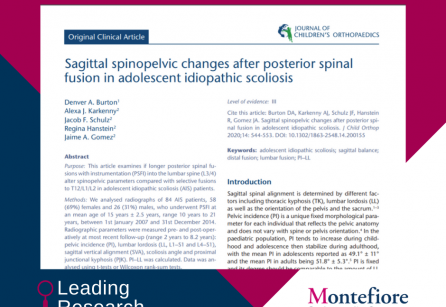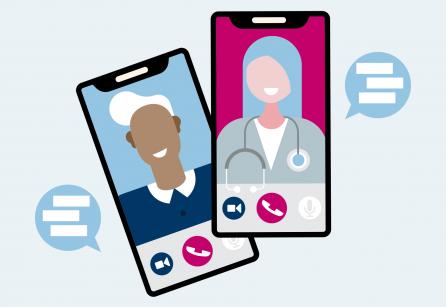Lower limb deformities are conditions that affect the length, rotation, alignment, and ultimately the function of the lower extremity. They generally develop in utero or during early childhood, but they can also occur in adolescence as a result of trauma, vitamin deficiencies, infections or other causes. These deformities can vary in severity, anatomic location and impact, differing from one patient to the next. In some cases, they can cause aesthetic concern, while in others they can greatly affect functional ability and quality of life.
Clubfoot
Clubfoot, otherwise known as congenital talipes equinovarus, is a well-described orthopedic condition of childhood in which the foot appears twisted or out of position. It can occur in one or both feet and is often an isolated finding in an otherwise perfectly healthy infant. This is one of the most common of all birth defects, affecting about one in 400 babies born in the United States each year. Boys are twice as likely to be diagnosed with clubfoot than girls.
Treatment for clubfoot is started soon after birth, preferably during the first week of life. The goal is to correct the twisted foot slowly and gently into a more normal position. This is achieved by a series of corrective casts that gradually stretch the tightened soft tissues of the foot. After serial cast treatment, many children require heel cord lengthening surgery, which is a minor procedure performed to complete the correction. This is usually done when the child is a few months of age.
Serial casting can be done in the office as an outpatient procedure and without the need for anesthesia or hospitalization. Though routine office visits and careful monitoring are required, this is a safe, well-described and well-tolerated treatment that yields excellent results in many cases. Cord lengthening is an outpatient procedure, after which the child can return home the same day.
Hemiepiphysiodesis
Angular deformities or leg length deformities sometimes arise from abnormal or unequal growth across the physis, also known as the growth plate. These deformities may impact the mechanics of the lower limb and can affect standing, walking, running and similar day-to-day activities. This can, in turn, lead to pain in adjacent joints or anatomic regions, thereby preventing children from achieving or realizing their desired goals and/or potential.
Hemiepiphysiodesis is a minimally invasive procedure designed to correct angular deformities or leg length discrepancies by modulating the growth across a growth plate, either temporarily or permanently. This procedure is performed by placing screws or plates across the growth plates, effectively tethering or slowing the growth of the faster-growing side of the bone. Proper planning, timing, and follow-up are essential to optimize the correction and achieve as symmetric and normal an outcome as possible.
Surgery is generally performed as an outpatient procedure. Patients may require protected weight-bearing devices, such as crutches, for a short period of time. Physical therapy is sometimes prescribed as well.
Computer Assisted Multiplanar External Fixator Deformity Correction
Lower limb deformities can at times be much more complicated or severe. These deformities might involve abnormalities across multiple planes, severe angular and/or rotational defects, or other aberrations, all of which make simple correction insufficient. In such instances, a more involved and complicated surgical correction may prove necessary.
A multiplanar external fixator is a surgical technique employed for deformity correction that allows for slow correction across numerous planes. This gradual realignment permits ongoing assessment, avoids over- or undercorrection, and allows for minor adjustments or fine-tuning.
The surgery is performed by making an incision and exposing the bone at the apex of the deformity, where the angulation is most severe. The bone is cut at this level, and external fixation wires or pins are placed into the bone above and below the cut. These wires or pins are then connected to an external fixator, a device that surrounds the limb on the outside of the body and provides stability or support like a cast. The surgeon will usually wait one to two weeks before progressively correcting the deformity by slowly adjusting or turning struts on the external fixator. Each turn will either lengthen or shorten the given strut. Since many struts are used and adjusted in a coordinated and prescribed manner, the bone can be accurately realigned.
The initial surgery requires a short hospital stay, after which the patient is usually seen as an outpatient. The movement or adjustment of the bone does not hurt, as it is done at a very slow rate (1mm per day). Provided with a special educational program and very clear instructions, the patient can even make these minor daily adjustments by turning struts on their own at home. Once the correction is complete, the bone is allowed to heal with the fixator in place for three to six months.
Magnetically Controlled Lengthening Nail (Limb Lengthening)
In some instances, limb length discrepancy is severe enough that simple lifts or shoe modifications are insufficient. In such cases, patients can experience abnormal mechanics, greatly affecting routine activities like standing, walking, running, and stair-climbing. This impairment can, in turn, prove very disruptive and may have a tremendous impact on a patient’s quality of life.
These patients may benefit from an intramedullary lengthening surgery. The Food and Drug Administration (FDA) recently approved an intramedullary device that utilizes an electromagnetic motor to allow for precise, non-invasive lengthenings. The surgery involves cutting the femur through a small incision in the thigh. A nail is then inserted into the center of the femur through a second small incision over the hip. Once inserted, the nail can be lengthened by applying a magnet over the nail and activating it using an external controller. Patients can do this on their own at home. As the lengthening is precise and slow, it is generally comfortable and well-tolerated. Once the appropriate length is realized, the bone is allowed to heal for three to six months, after which the nail is usually removed in another short procedure.
Surgery may involve a short hospital stay and will require careful weight-bearing protection during the lengthening and healing process. Crutch use is usually needed for many months to protect the bone and the nail, and to ensure optimal results. Physical therapy is an important aspect of the lengthening process and generally prescribed to aid stretching of the muscles and soft tissues. The benefits of this procedure largely outweigh these restrictions, and most patients tolerate these temporary limitations.

















